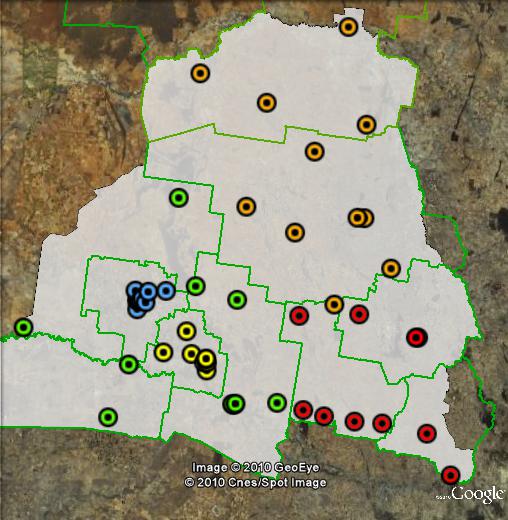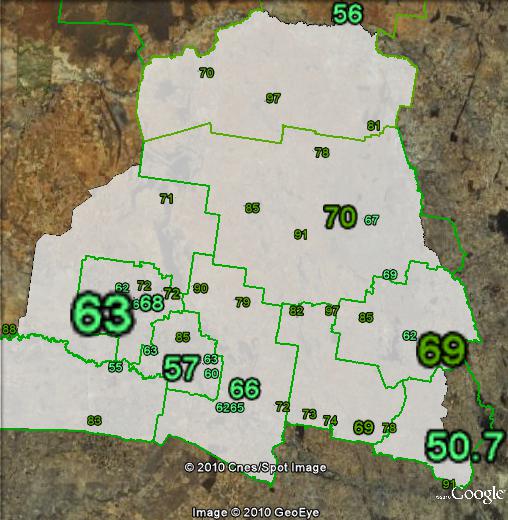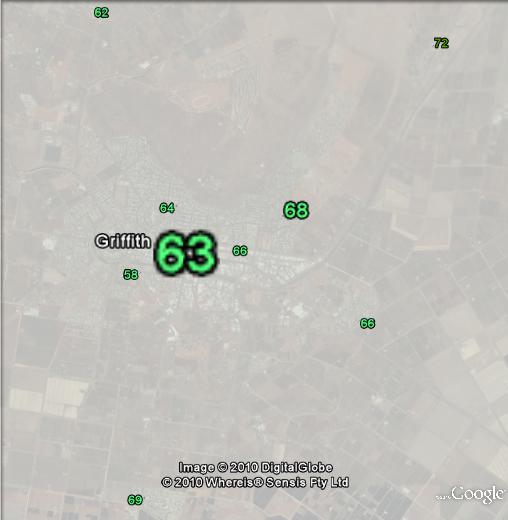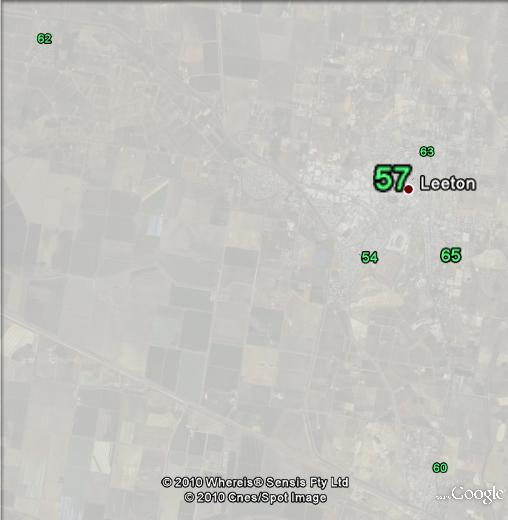NAT 16.1%
Incumbent MP
Adrian Piccoli, since 1999.
Geography
South-Western NSW. Murrumbidgee covers all of Coolamon, Griffith, Leeton, Murrumbidgee, Narrandera and Temora local government areas, and most or part of Bland, Carrathool, Junee and Lachlan council areas. The seat covers Leeton, Griffith, Narrandera, Condobolin, West Wyalong and Temora.
History
Murrumbidgee is one of only two districts to have existed continuously since the first Legislative Assembly was elected in 1856. The seat was a two-member district from 1856 to 1859, a single-member district from 1859 to 1880, a two-member district until 1885, a three-member district from 1885 to 1894, a single-member district from 1894 to 1920, a three-member district from 1920 to 1927, and a single-member district since 1927.
The seat was dominated by the ALP in the middle part of the last century, but has been held by the National Party since 1984.
In 1941, the sitting Country Party MP, Robert Hankinson, retired. The official Labor candidate was defeated by independent Labor candidate George Enticknap, who was then welcomed into the Labor caucus in the Parliament. He served as a minister from 1960 to 1965, when he retired.
Al Grassby won Murrumbidgee for the Labor Party at the 1965 election. He resigned from the seat in 1969 to take the federal seat of Riverina. He served as Minister for Immigration from 1972 to 1974, when he lost Riverina.
Lin Gordon won the 1970 Murrumbidgee by-election for the ALP. He served as a minister from 1976 until his retirement in 1984.
In 1984, Murrumbidgee was won by the National Party’s Adrian Cruickshank. He came third on primary votes, but preferences from the Liberal Party pushed him ahead of independent candidate Thomas Marriott. Marriott’s preferences elected Cruickshank over the Labor Party. He held the seat until his retirement in 1999.
Murrumbidgee has been held by the National Party’s Adrian Piccoli since 1999. He has served as deputy leader of the NSW National Party since 2008, and is currently Shadow Minister for Education, Skills and Youth Affairs.
Candidates
- William Wood (Labor)
- George Benedyka (Greens)
- Fiona Bushby (Christian Democratic Party)
- Adrian Piccoli (Nationals)
Political situation
Murrumbidgee is a very safe Nationals seat.
2007 result
| Candidate | Party | Votes | % | Swing |
| Adrian Piccoli | NAT | 26,772 | 63.2 | -2.6 |
| Michael Kidd | ALP | 13,496 | 31.9 | +3.5 |
| Peter Carruthers | GRN | 2,060 | 4.9 | +0.7 |
2007 two-candidate-preferred result
| Candidate | Party | Votes | % | Swing |
| Adrian Piccoli | NAT | 27,365 | 66.1 | -2.8 |
| Michael Kidd | ALP | 14,051 | 33.9 | +2.8 |
Booth breakdown
Booths in Murrumbidgee have been divided into five areas. Booths in Griffith and Leeton council areas have each been grouped together. The remainder of the seat has been divided between North, South-East and South-West.
The Nationals two-party vote varied from 60% in Leeton to 68.7% in the north of the seat.

| Voter group | GRN % | NAT 2CP % | Total votes | % of votes |
| Griffith | 4.3 | 65.2 | 11,008 | 26.0 |
| South-East | 6.8 | 65.7 | 7,910 | 18.7 |
| North | 5.0 | 68.7 | 5,602 | 13.2 |
| Leeton | 2.9 | 60.2 | 5,576 | 13.2 |
| South-West | 3.8 | 68.2 | 4,584 | 10.8 |
| Other votes | 5.7 | 68.9 | 7,648 | 18.1 |





Labor used to do well in irrigation farming areas like this (and Chaffey in South Australia). Support for irrigation was a lefty populist cause opposed by pastoralists who considered it uneconomic state socialism. This is more ethnically diverse than many rural seats and Piccoli criticised Howard’s views on multiculturalism. But ethnic diversity was entangled with debates about organised crime and controversies about associations of Grassby.
My prediction: National retain, 5-10% swing.
Labor have named a new candidate, William Wood:
http://www.abc.net.au/news/stories/2011/02/28/3150412.htm